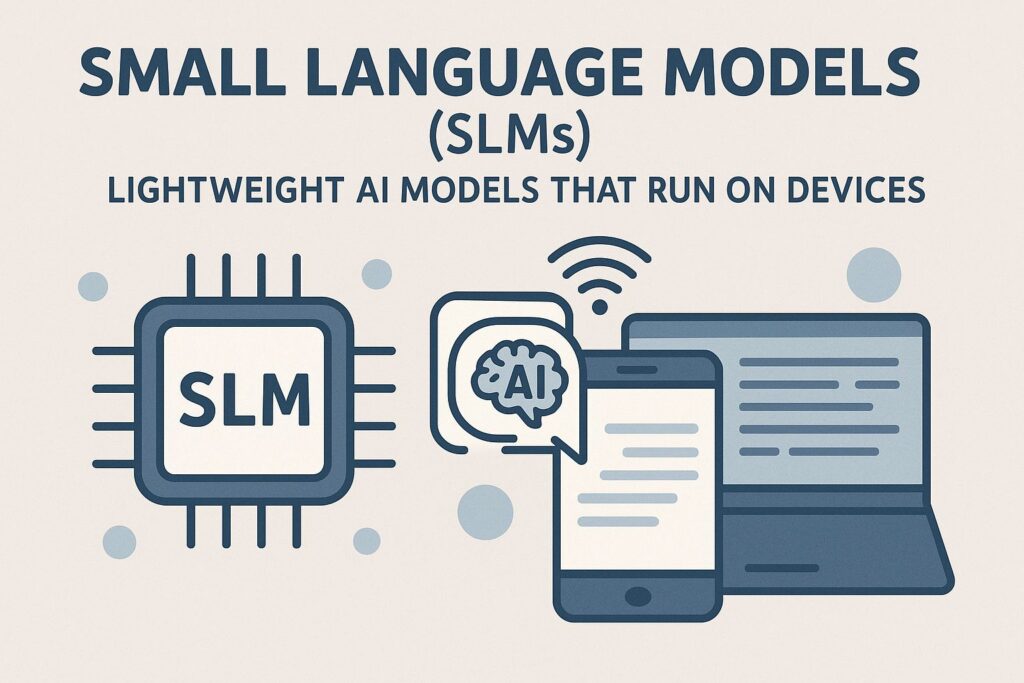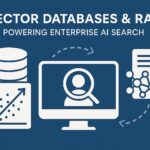Introduction
In 2025, the world of Artificial Intelligence is witnessing a major shift — from massive cloud-based models like GPT to Small Language Models (SLMs) that can run locally on your device. These models are designed to bring the power of AI closer to the user — literally in their hands.
In this post, we’ll explore what SLMs are, how they differ from large models, why they matter, and where they’re being used today.
What Are Small Language Models (SLMs)?
A Small Language Model (SLM) is a compact AI model trained on limited data and parameters, optimized for speed, efficiency, and on-device operation.
Unlike massive models that require cloud servers and GPUs, SLMs are lightweight enough to run on smartphones, laptops, and edge devices.
Example
- Gemini Nano (by Google)
- Phi-3 (by Microsoft)
- Llama 3-8B (Meta)
- Mistral 7B
These models are smaller in size (typically a few billion parameters) but are fine-tuned for specific, practical tasks — like writing summaries, answering questions, or powering chatbots.
Why Small Language Models Matter
The rise of SLMs is not just a trend; it’s a shift in how AI is accessed and deployed.
1. Privacy & Security
Since SLMs can run on-device, your data never leaves it — ensuring maximum privacy and reduced data sharing.
2. Low Latency
No need for internet or server calls. On-device processing means instant responses without lag.
3. Cost Efficiency
Running models locally reduces cloud infrastructure costs, making AI affordable for startups and enterprises alike.
4. Energy Efficiency
Smaller models require less computation power, which means lower energy consumption — better for both the device and the planet.
SLMs vs LLMs: What’s the Difference?
| Feature | Small Language Models (SLMs) | Large Language Models (LLMs) |
|---|---|---|
| Size | Few billion parameters | Hundreds of billions of parameters |
| Speed | Very fast | Slower due to heavy computation |
| Hardware | Can run on-device | Needs high-end cloud GPUs |
| Cost | Low | High |
| Use Case | Summaries, assistants, quick responses | Deep reasoning, coding, creative writing |
In short — SLMs are for everyday use, LLMs are for complex reasoning.
How SLMs Are Powering On-Device AI
SLMs are already embedded into the tools and apps we use daily:
- Smartphones – Text prediction, offline voice assistants (e.g., Gemini Nano on Pixel)
- Wearables – Health recommendations and real-time coaching
- Enterprise apps – Document summarization, quick insights
- IoT Devices – Smart homes and autonomous machines
As hardware continues to evolve, SLMs will bridge the gap between local AI power and cloud intelligence.
The Role of RAG with SLMs
When combined with Retrieval-Augmented Generation (RAG), SLMs can access external knowledge bases to provide accurate and contextual answers — even without being massive.
This hybrid approach allows devices to retrieve data from local or private databases and generate intelligent responses in real-time.
Future of SLMs in 2025 and Beyond
As more tech giants and open-source communities invest in smaller, optimized models, we’ll see:
- SLMs embedded in browsers
- Offline AI assistants
- Privacy-first enterprise chatbots
- Edge AI applications in healthcare and education
The future isn’t just bigger models, it’s smarter, smaller, and closer to you.
Conclusion
Small Language Models (SLMs) are redefining the way we experience AI — shifting from cloud dependency to local autonomy.
In 2025, they’re not replacing LLMs but complementing them — offering a balance between speed, privacy, and efficiency.
Whether you’re an AI enthusiast, developer, or enterprise innovator — understanding SLMs will be key to building the next generation of intelligent, on-device experiences.



